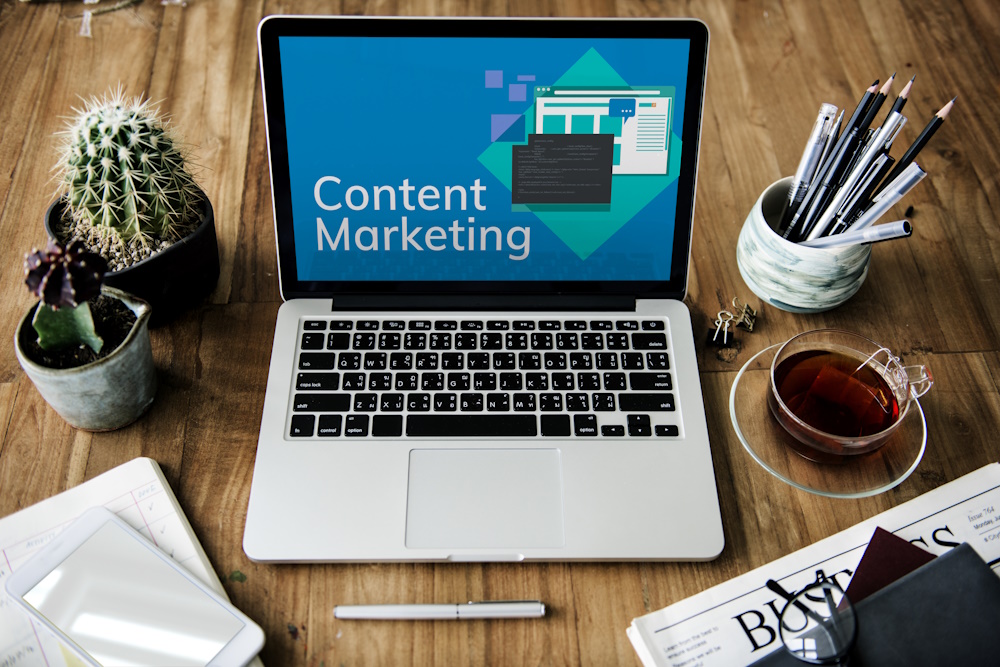
Mastering the Science of Irresistible Headlines: How to Skyrocket Traffic & Engagement
Discover the secrets to crafting irresistible headlines that drive traffic and engagement. Learn proven strategies, SEO tactics, and tools for headline optimization.
In today’s competitive digital space, grabbing attention is more challenging than ever. Whether you are writing blog posts, social media content, or marketing copy, your headline is the first thing potential readers see. It determines whether they will engage with your content or move on to something else.
A well-crafted headline can mean the difference between content that gets ignored and content that drives significant traffic and engagement. Studies indicate that while 80% of users will read a headline, only 20% will continue to read the full article. This means that your headline needs to work as a powerful hook, capturing attention while providing a clear reason for the reader to stay.
Crafting an irresistible headline is both an art and a science. Understanding the psychological triggers that compel readers to click, applying proven formulas, and optimizing for SEO can significantly improve the performance of your content. This guide will walk you through the most effective strategies for writing high-performing headlines, supported by research, real-world examples, and expert insights.

The Psychology Behind Attention-Grabbing Headlines
Effective headlines are not just about being catchy—they are strategically designed to trigger emotional and cognitive responses in the reader. Various psychological principles can be leveraged to create more engaging headlines.
Key Elements of High-Performing Headlines
- Clarity and Specificity – A vague headline leaves the reader uncertain about what they will gain. A clear and specific headline tells them exactly what to expect.
- Curiosity Gap – Providing just enough information to spark curiosity while withholding the full answer can encourage readers to click.
- Emotional Appeal – Content that evokes emotions such as excitement, fear, or surprise tends to perform better. Emotional triggers make headlines more compelling.
- Use of Power Words – Certain words are naturally persuasive. Words like "proven," "essential," "unbelievable," and "exclusive" add a sense of importance and urgency.
- Inclusion of Numbers – Headlines that feature numbers (e.g., "7 Ways to Improve Your Productivity") perform better because they promise structured, easily digestible content.
- Optimal Length – A headline should be long enough to provide clarity but short enough to be impactful. The ideal length is between 6-8 words or 50-70 characters for maximum engagement.
Proven Headline Formulas for High Engagement
If you are unsure how to craft the perfect headline, certain formulas have been tested and proven to work across different platforms. These formulas balance readability, curiosity, and informativeness.
- How-to Headlines: "How to [Achieve Desired Outcome] in [Timeframe]"
- List Headlines: "[Number] Ways to [Solve a Problem] Without [Common Obstacle]"
- Question Headlines: "Are You Making These [Number] [Topic] Mistakes?"
- Negative Headlines: "Stop [Undesirable Action] and Start [Desirable Action] Today"
- Comparison Headlines: "[Product A] vs. [Product B]: Which One is Right for You?"
- Success Story Headlines: "How I [Achieved Goal] in [Timeframe] Without [Common Struggle]"
By using these formulas as a foundation, you can create headlines that are more likely to attract clicks and engagement.
The Role of SEO in Headline Writing
A great headline should not only attract human readers but also perform well in search engine rankings. Optimizing headlines for SEO helps increase visibility in search results, making it easier for people to find your content.
Best Practices for SEO Headlines
- Include Primary Keywords – Use relevant keywords naturally in your headline. For example, instead of “Ways to Improve Productivity,” an SEO-friendly version would be “10 Proven Ways to Improve Productivity at Work.”
- Maintain Concise Length – Keep your headline under 70 characters to ensure it displays properly in search engine results.
- Avoid Clickbait – A misleading headline may generate clicks initially, but it will lead to high bounce rates and damage your credibility over time.
- Optimize for Search Intent – Align your headline with common search queries. If people frequently search for "best SEO tools," a headline like "The 10 Best SEO Tools for 2024" is more likely to rank well.
Balancing readability with SEO optimization ensures that your headline works effectively for both search engines and human audiences.
Comparison Table: Popular Headline Analyzer Tools
Several tools are available to help you refine and test your headlines for better performance. These tools provide insights into word balance, sentiment analysis, and overall effectiveness.
| Tool Name | Key Features | Pros | Cons | Pricing |
|---|---|---|---|---|
| CoSchedule Headline Analyzer | Evaluates word balance, sentiment, and length | Easy to use, detailed analysis | Limited free features | Free basic version, paid plans start at $29/month |
| ShareThrough Headline Analyzer | Focuses on engagement and shareability | Actionable suggestions | Requires email signup | Free |
| Monsterinsights Headline Analyzer | WordPress integration for real-time analysis | Convenient for WordPress users | Limited outside of WordPress | Free with MonsterInsights Pro ($99.50/year) |
| RankMath SEO Title Analyzer | SEO-focused analysis for WordPress users | Built into SEO plugin | Only available on WordPress | Free with RankMath SEO plugin |
| Portent’s Content Idea Generator | Provides creative headline ideas | Useful for brainstorming | Limited to content generation | Free |
Using these tools can help ensure your headlines are engaging, optimized, and structured for maximum performance.
Advanced Headline Optimization Strategies
Refining and optimizing your headlines is an ongoing process, and several advanced strategies can significantly improve their performance. By continuously testing, analyzing, and refining your headlines, you can create more compelling and effective content that drives clicks and conversions. Here are some advanced strategies to consider:
A/B Testing
- What is it? A/B testing (or split testing) involves creating two versions of a headline and testing them with different segments of your audience to see which one performs better.
- Why it’s important? A/B testing takes the guesswork out of headline writing by allowing you to measure the actual performance of your headlines.
- How to use it effectively:
- Test variations of your headline with different wording, structure, or emotional appeal.
- Compare headlines with different tones (e.g., formal vs. informal) or formats (e.g., list vs. how-to).
- Use data to inform your headline creation process and adjust future posts based on what performs best.
- Tools to use: Tools like Google Optimize, Optimizely, or simple A/B testing in your email or social media campaigns can help you run these tests effectively.
Use of Strong Adjectives
- What is it? Strong adjectives add emotional intensity to your headline, making it more persuasive and attention-grabbing.
- Why it’s important? Powerful adjectives make your headline stand out and create a more emotional appeal, compelling the reader to act. Words like "exclusive," "ultimate," "essential," and "shocking" evoke a sense of urgency and importance.
- How to use it effectively:
- Use adjectives like “essential,” “exclusive,” “proven,” or “ultimate” to suggest that the content is valuable and must-read.
- Use descriptive, evocative language that enhances the promise of your content.
- Balance powerful adjectives with clarity to avoid overhyping and to maintain credibility.
- Examples:
- "The Ultimate Guide to SEO"
- "5 Proven Ways to Boost Your Productivity"
Creating Urgency
- What is it? Creating urgency means crafting headlines that make readers feel like they need to act immediately or risk missing out.
- Why it’s important? Urgency taps into FOMO (Fear of Missing Out), a powerful psychological trigger that can prompt readers to click or take action right away.
- How to use it effectively:
- Use phrases like “limited time,” “last chance,” “ending soon,” or “don’t miss out” to create a sense of immediacy.
- Highlight time-sensitive offers or information, such as deadlines or exclusive deals.
- Ensure the content delivers on the promise of urgency to avoid backlash or clickbait accusations.
- Examples:
- "Hurry! Last Chance to Save 50% on Your Subscription"
- "Offer Ends in 24 Hours—Act Fast!"
Avoiding Overly Complex Headlines
- What is it? A clear, concise headline is more likely to attract clicks than a long, complicated one. Overly complex headlines can confuse readers or fail to deliver the necessary information quickly.
- Why it’s important? Readers often skim headlines, so keeping them simple and easy to understand is crucial for grabbing attention. The simpler your headline, the easier it is for the reader to digest the message and take action.
- How to use it effectively:
- Keep your headlines between 6-8 words or 50-70 characters for maximum readability.
- Avoid using too many adjectives or complex phrases. Stick to the core message.
- Make sure the headline is easy to scan and gets to the point quickly.
- Examples:
- "How to Save Money on Groceries" (simple and clear)
- "5 Tips to Increase Your Productivity at Work" (easy to digest)
Creating Curiosity (Curiosity Gap)
- What is it? The curiosity gap refers to providing just enough information to pique interest while leaving some details hidden, prompting readers to click for the full story.
- Why it’s important? Creating curiosity encourages users to click on your content to uncover the answers to questions or the missing information alluded to in your headline.
- How to use it effectively:
- Use language that hints at a solution or valuable information without revealing everything.
- Pose a question or suggest a mystery that your content will solve.
- Ensure the content delivers on the promise of the headline to avoid disappointment.
- Examples:
- "Why You’re Not Losing Weight (And What to Do About It)"
- "Are You Making These Common Mistakes with SEO?"
Leveraging Numbers
- What is it? Including numbers in your headlines offers structure and clarity, making your content more digestible. Numbers suggest that the content will be organized and provide concrete takeaways.
- Why it’s important? Headlines with numbers tend to perform better because they promise an easy-to-follow list or guide, which readers often prefer. Numbers also suggest that the content is valuable and actionable.
- How to use it effectively:
- Use odd numbers, such as “7” or “9,” as they tend to perform better than even numbers.
- List headlines work especially well for tips, guides, and strategies (e.g., "10 Ways to...").
- Be sure to match the headline’s promise with the content itself (e.g., if you say “5 tips,” only provide five tips).
- Examples:
- "7 Simple Strategies to Boost Your Website Traffic"
- "9 Proven Ways to Improve Your Writing Skills"
Avoiding Clickbait
- What is it? Clickbait headlines are designed to grab attention with exaggerated or misleading statements, often not delivering on the promise made in the headline.
- Why it’s important? While clickbait may generate initial traffic, it can lead to high bounce rates and a loss of trust with your audience. Providing value and accurately representing the content is essential to building long-term credibility.
- How to use it effectively:
- Be clear and transparent about what the content offers.
- Avoid using misleading language that overpromises.
- Ensure your headline reflects the actual content to avoid reader frustration.
- Examples of Clickbait to Avoid:
- "You Won’t Believe What Happens Next"
- "This One Trick Will Change Your Life Forever"
Optimize for Social Sharing
- What is it? A headline optimized for social sharing is one that is short, intriguing, and encourages readers to share with others on platforms like Twitter, Facebook, and LinkedIn.
- Why it’s important? Social media is a key driver of traffic, and having headlines that are easily shareable increases the potential for organic spread. A great headline should not only make readers want to click but also make them want to share it with their followers.
- How to use it effectively:
- Keep the headline concise, making it easy to read on social media feeds.
- Use strong, actionable words that encourage readers to share the content.
- Ensure the headline works well in all formats, including mobile devices and platforms that limit characters (like Twitter).
- Examples:
- "The 10 Most Common SEO Mistakes (And How to Fix Them)"
- "How to Grow Your Blog Audience in Just 30 Days"
By consistently applying these advanced headline optimization strategies, you can dramatically improve your content’s engagement and performance. Whether you're testing headlines, using emotional triggers, creating urgency, or optimizing for SEO and social media, each strategy plays an important role in making your headlines irresistible.
Case Studies: Headlines That Generated Massive Traffic
Looking at real-world examples provides insights into why certain headlines work better than others.
- BuzzFeed: "23 Things Parents Should Never Apologize For"
- Uses a specific number and appeals to a target audience.
- Upworthy: "This Kid Just Died. What He Left Behind Is Wondtacular."
- Leverages emotional appeal and curiosity to engage readers.
- Neil Patel: "How I Generated 518,399 Visitors and 16,394 Leads from 77 Webinars"
- Uses precise data points to establish credibility and highlight value.
These examples highlight the effectiveness of using numbers, emotional triggers, and unique word choices to create impactful headlines.
Crafting Headlines That Drive Results
Mastering headline writing is essential for increasing visibility, engagement, and conversions. By understanding psychological triggers, leveraging effective headline formulas, and optimizing for SEO, you can craft headlines that attract and retain readers.
Regularly testing and refining your approach will help improve performance over time. Whether you are creating content for blogs, social media, or digital marketing campaigns, a strong headline can make all the difference.
With the right strategies and tools, you can create headlines that not only capture attention but also drive measurable results, leading to increased traffic and engagement.





